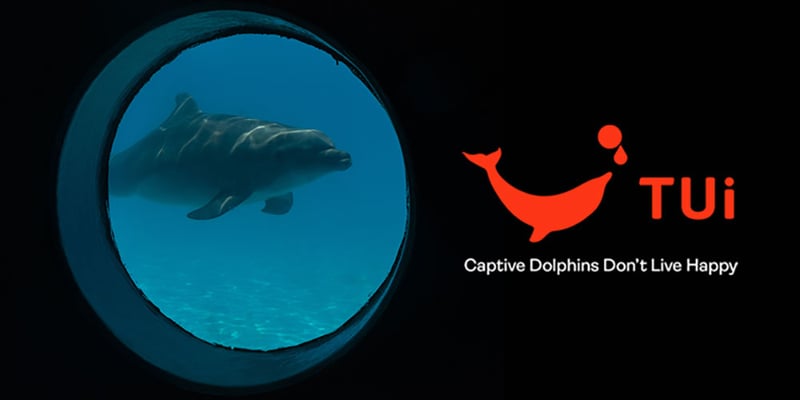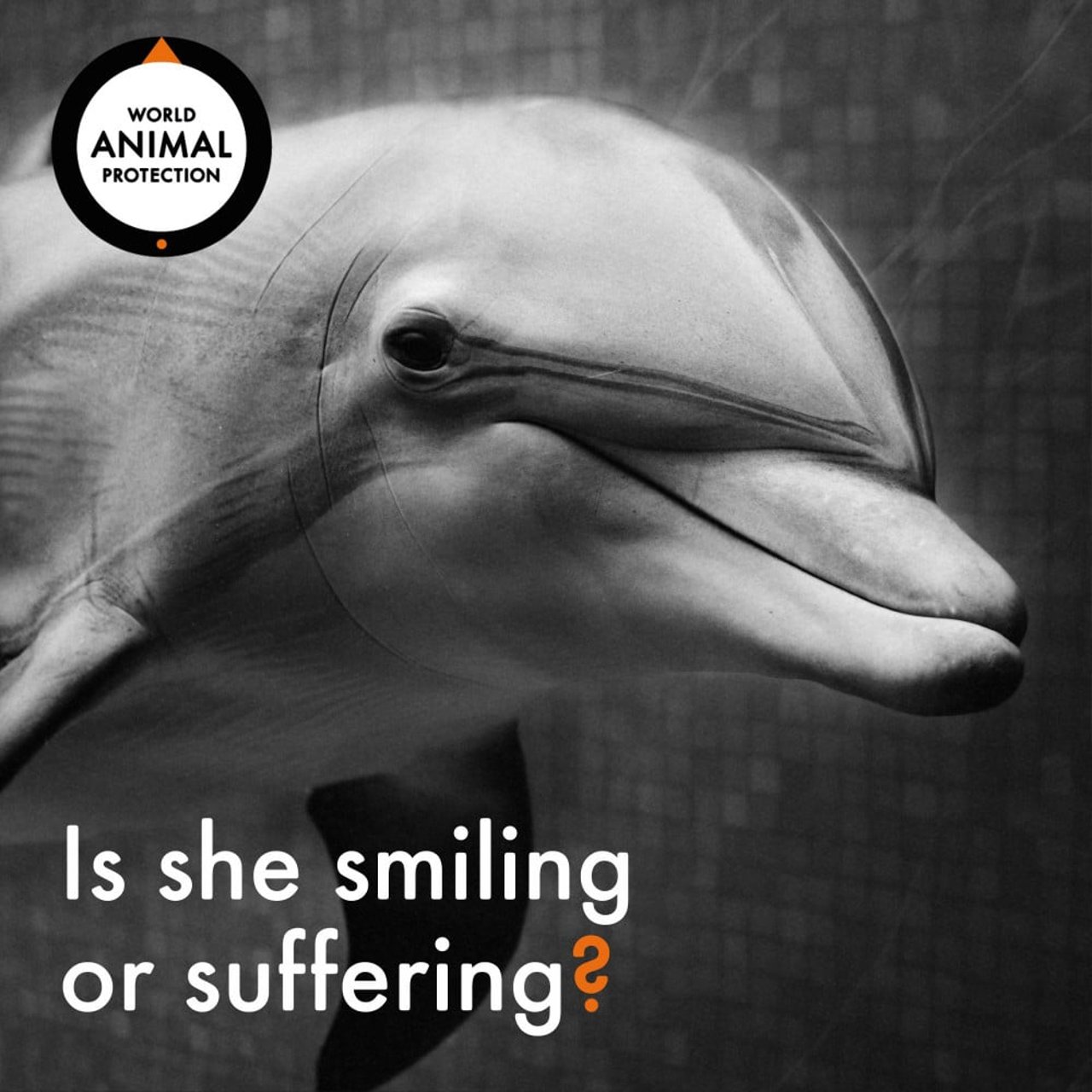
Expedia Group profiting from cruel dolphin entertainment
News
Global travel company Expedia Group – which includes subsidiaries hotels.com and ebookers – is profiting from a multibillion-dollar industry of dolphin cruelty.
Our report, 'Behind the Smile', shows how millions of animal lovers every year are fooled into thinking that dolphin shows are sold as cruelty-free, educational and good for conservation efforts.
But this could not be further from the truth – the industry is profiting billions of dollars from the cruel captivity of dolphins kept for entertainment.
From these numbers, it’s clear why this industry is desperate to deceive the public to protect the billions of dollars made at the expense of these animals.
Dolphins stressed – not smiling
Inherent suffering is associated with all stages of dolphins’ lives in captivity. Even though dolphins may appear to be smiling this is just the shape of their jaw. In captivity they experience stress and suffering at every stage of their miserable lives.
Drugged to cope with captivity
In their natural environment, dolphins swim 100 square kilometres of ocean freely, sometimes much more. But held in tiny barren, concrete tanks 200k times smaller than their natural space, exposed to infection and chemicals and often drugged to cope with captivity – they sadly can only swim a few metres at a time.
Nick Stewart, World Animal Protection’s global head of dolphins campaign said:
“Dolphin entertainment is animal cruelty masquerading as wholesome family fun. Whether bred in captivity or captured from the wild by being torn from their mother’s side, these sociable, intelligent animals are imprisoned for life and are reduced to begging clowns performing circus-tricks in exchange for food. For a wild animal like dolphins, a life spent in a concrete box is not a life, it is a life sentence - we need to make this the last generation of dolphins in captivity.”
Venues promote the rescue and rehabilitation of dolphins and claim to boost conservation efforts. In fact, as little as 5% - 10% of zoos, dolphinariums and aquaria are involved in substantial conservation efforts, and the amount spent is often less than 1% of the profit they make. Dolphins bred in captivity are not endangered and are not released to the wild but are used solely to sustain the captive population which makes a mockery of the industry’s conservation claims.
Dolphin entertainment is not education
Dolphins being used as live surfboards, facing large crowds of people day in day out with loud music and cheering, and enduring a never-ending stream of tourists seeking that perfect selfie is not education, nor is it humane entertainment.
For a wild animal like dolphins, a life spent in a concrete box is not a life, it is a life sentence - we need to make this the last generation of dolphins in captivity. - Nick Stewart, World Animal Protection global head of dolphins campaign
